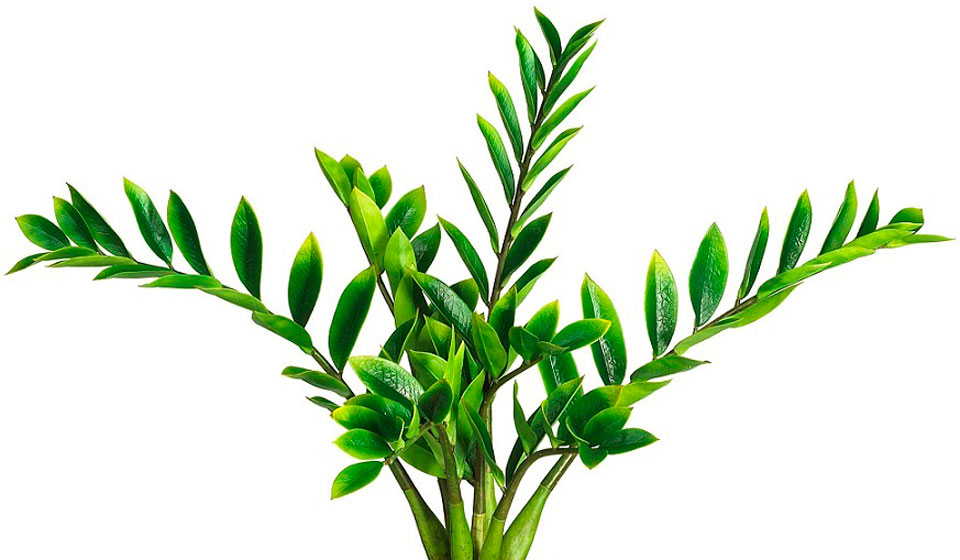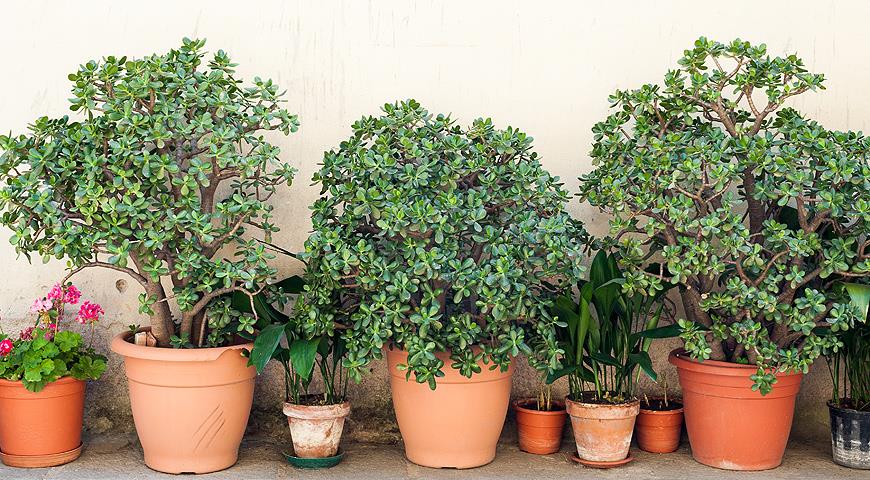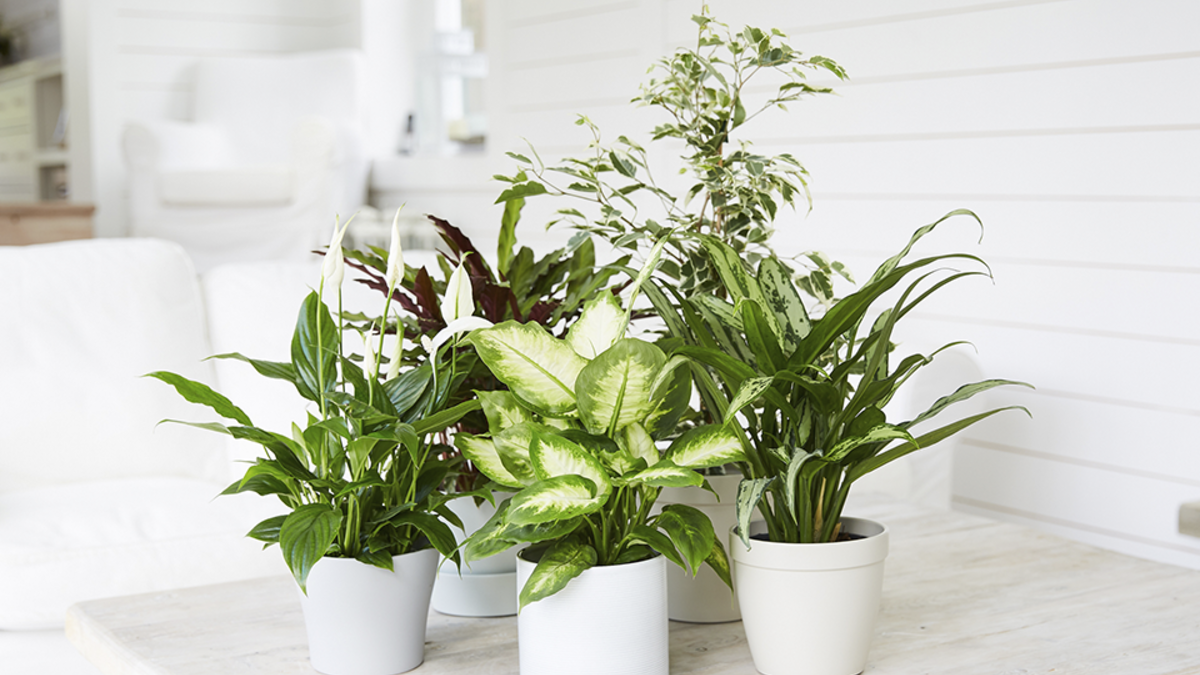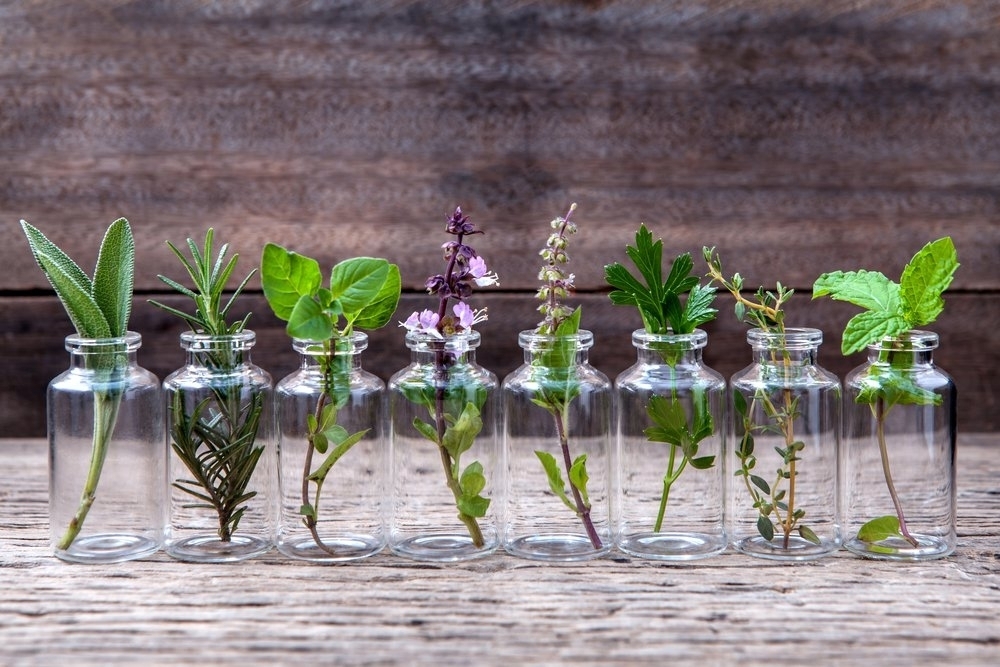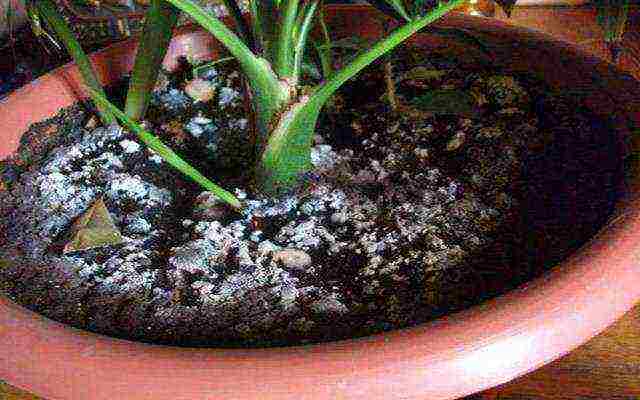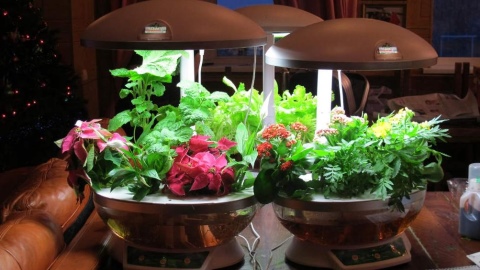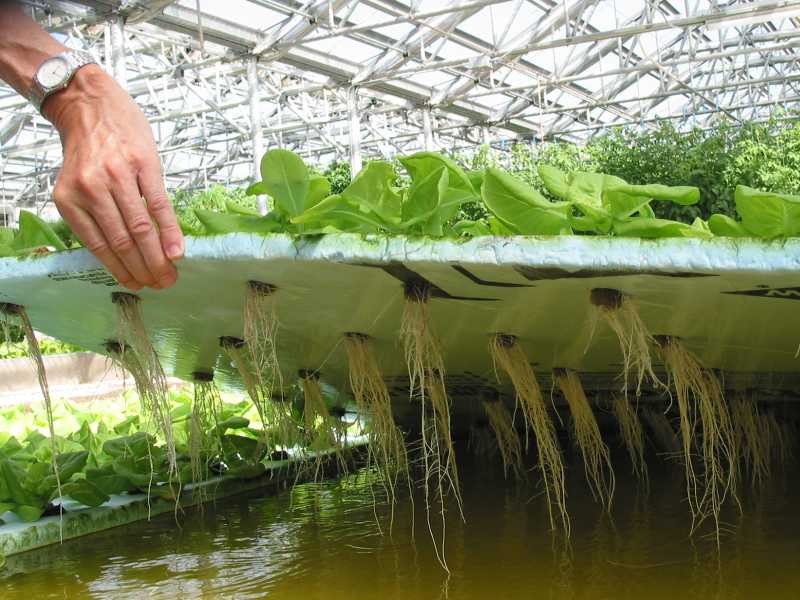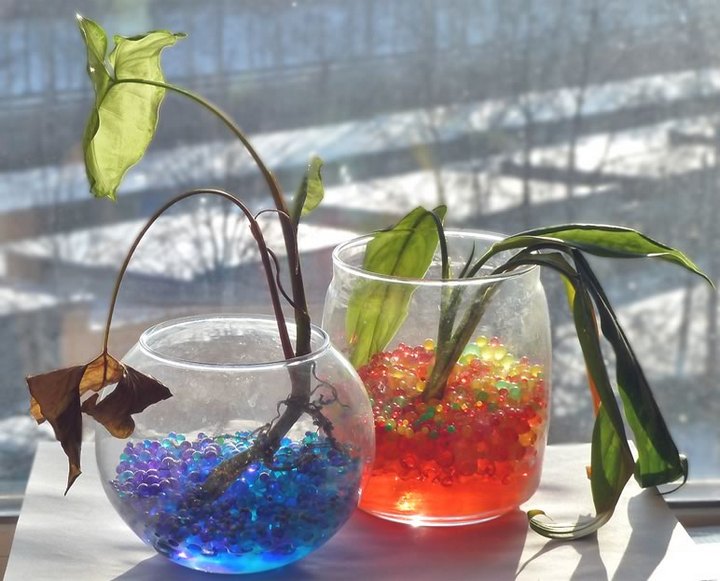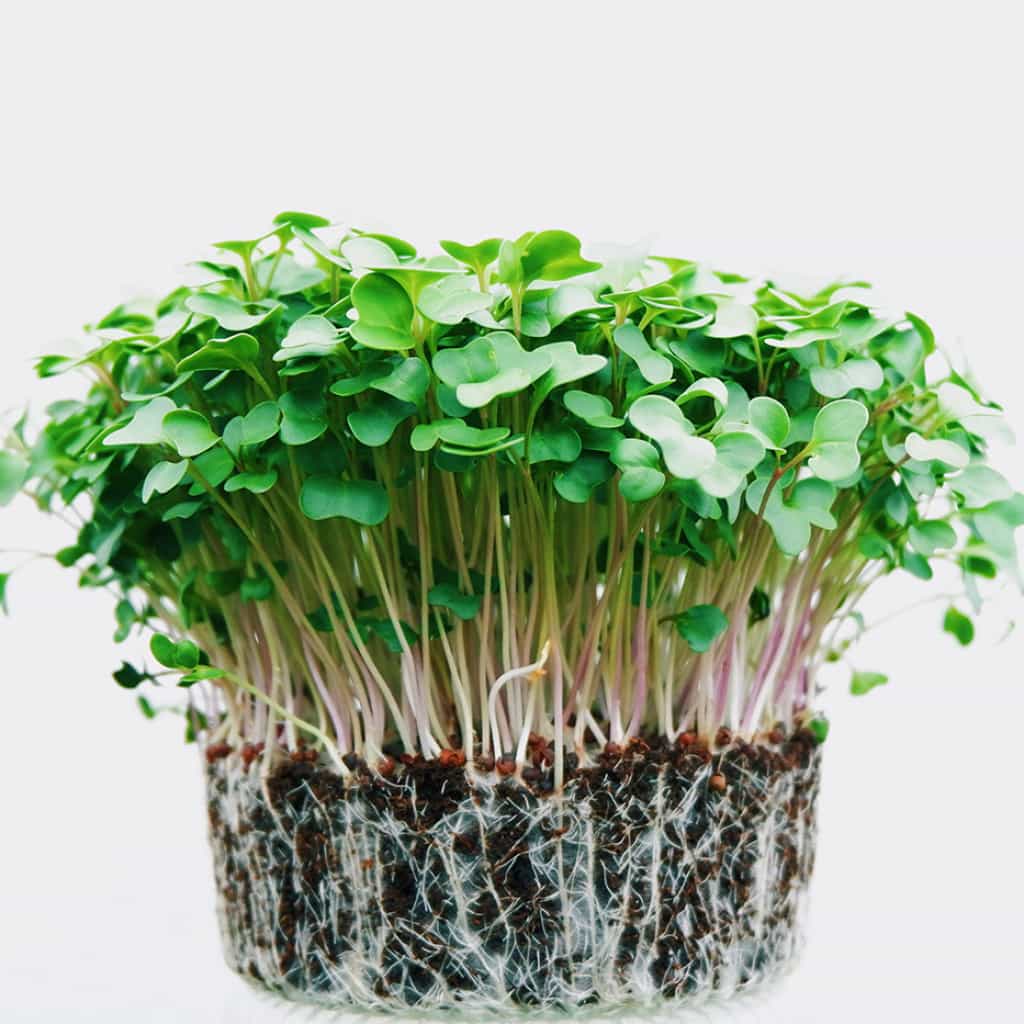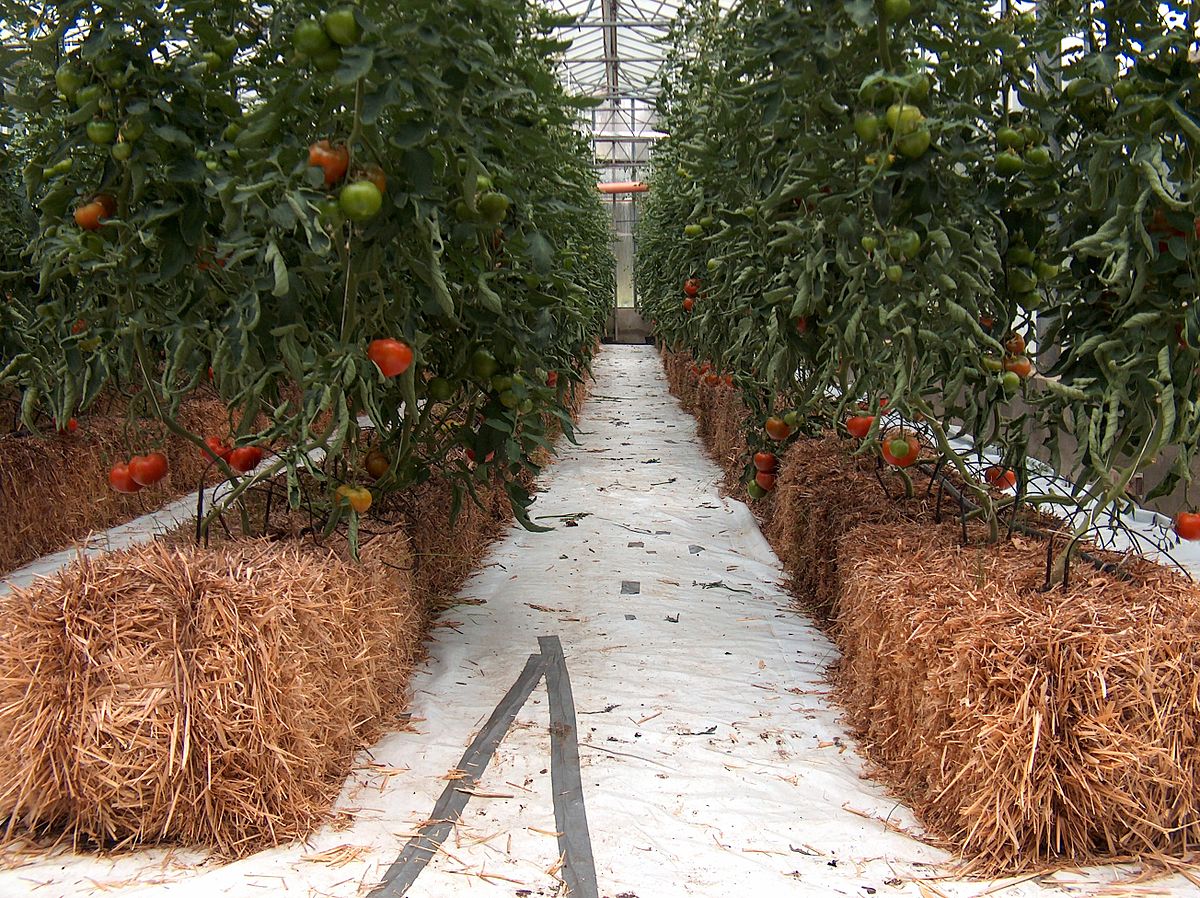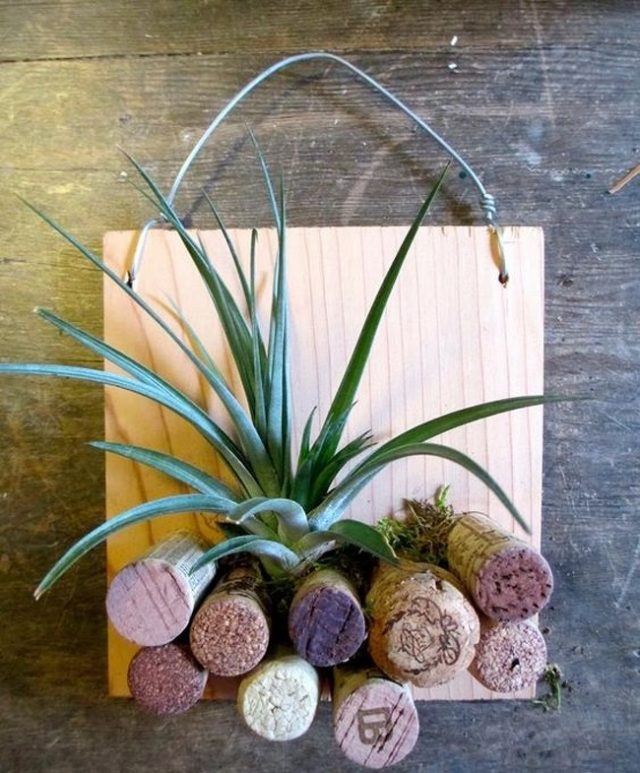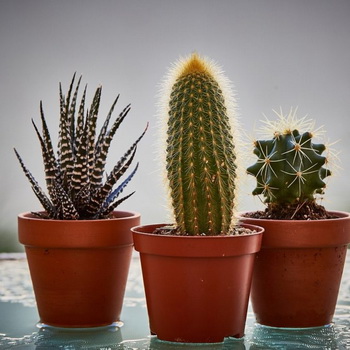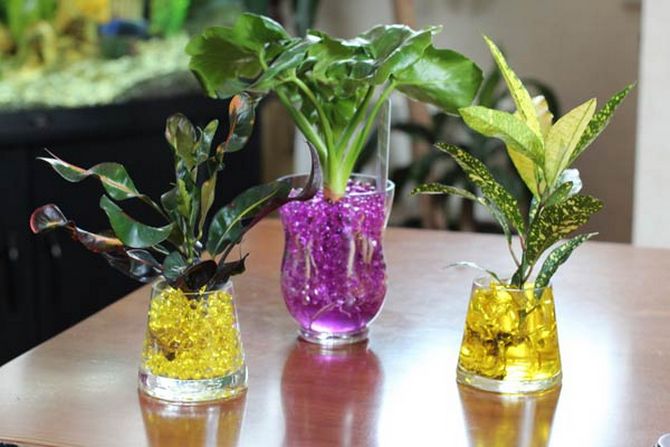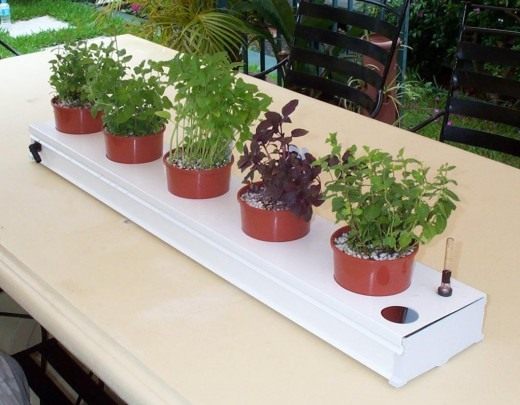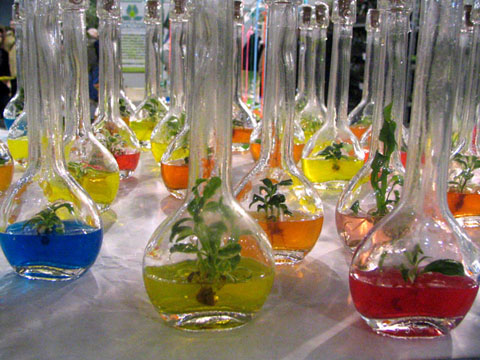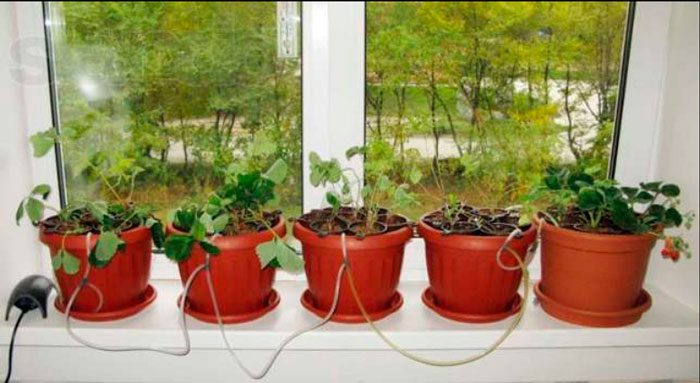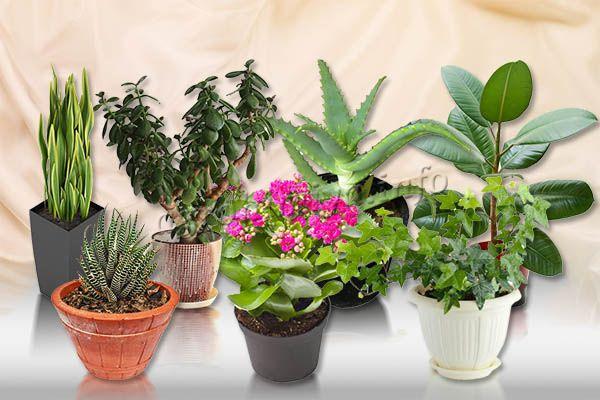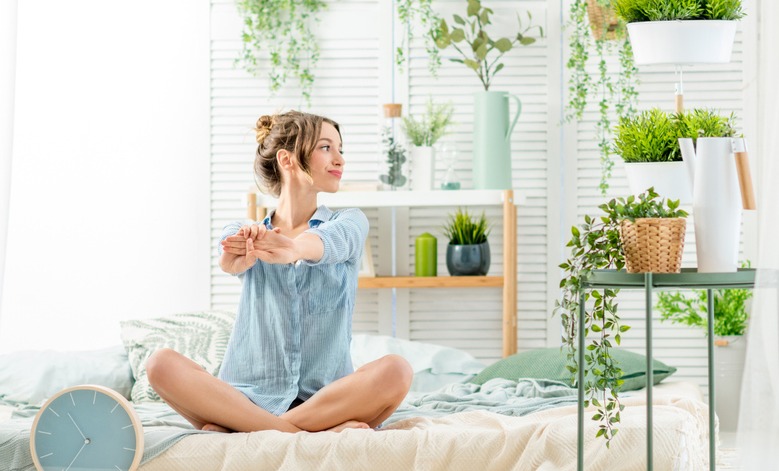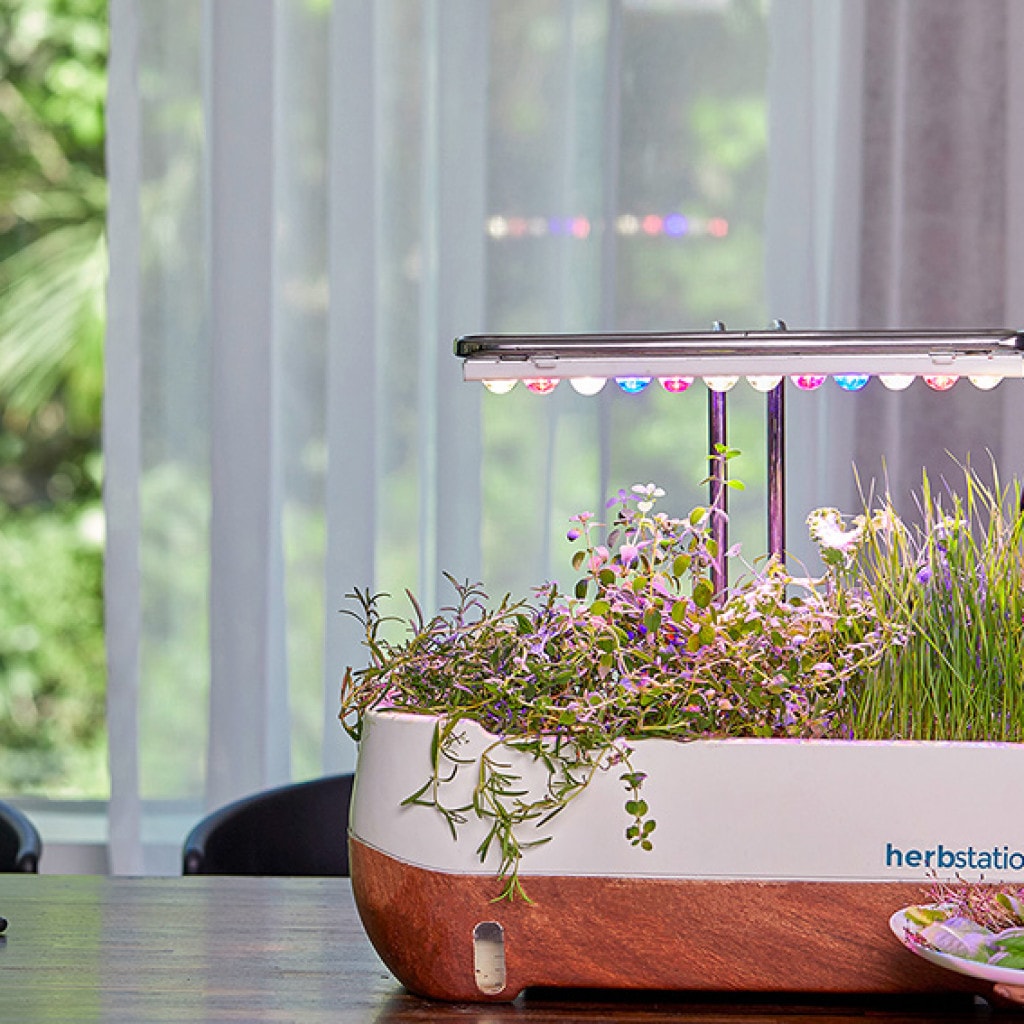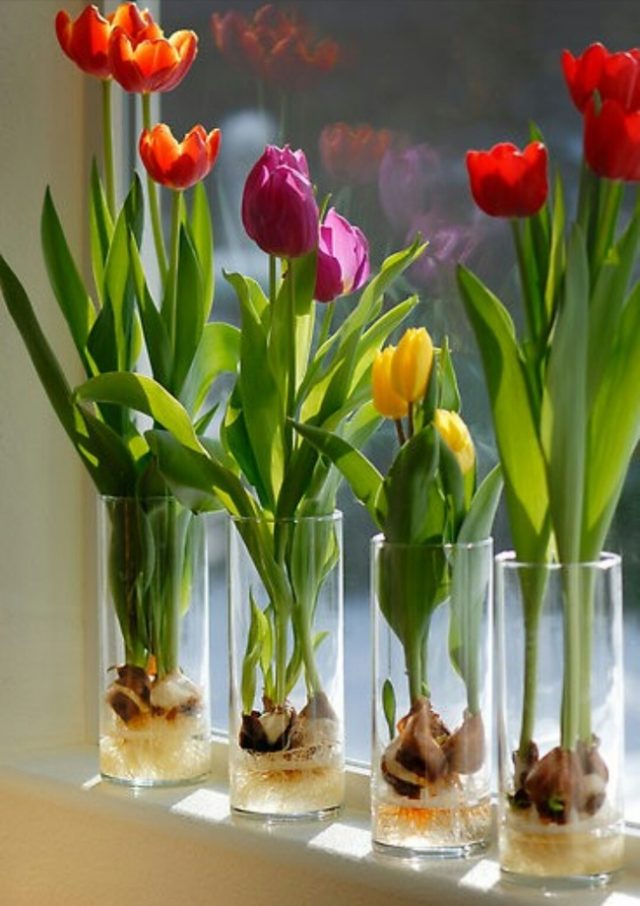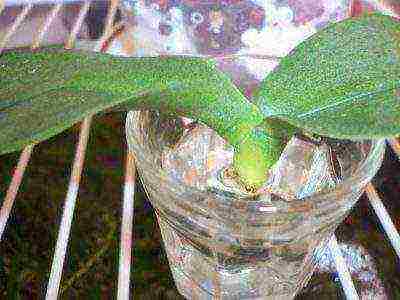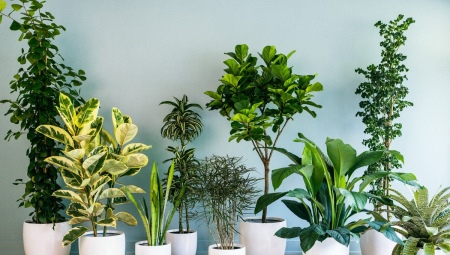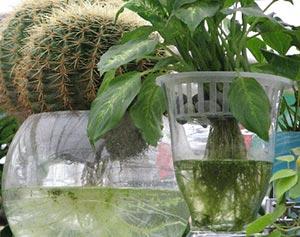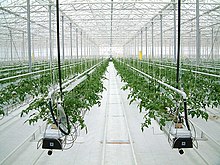White bloom and mold on the soil of indoor plants
Often a white or yellowish bloom can be seen on the surface of the soil in a flower pot. Many do not attach any importance to this, and completely in vain. The appearance of plaque indicates the presence of a fungal disease or mold. Such plaque not only spoils the appearance of the plant, but can also lead to decay of the plant roots.

White plaque and mold on the ground of indoor plants: photo
The reasons for the appearance of mold:
- violation of the watering regime, excessive watering of the plant;
- violation of plant conditions (poorly ventilated room, insufficient lighting, high humidity);
- improperly selected container for growing a plant (too much soil, which disrupts the natural processes of moisture evaporation).
It is known that mold can grow in any environment. However, it is the room temperature with high air humidity that is favorable for its development.
To prevent the development of mold, it is necessary to ventilate the room more often, maintain cleanliness and periodically disinfect the surfaces of window sills, shelves where flowers are located, plant care equipment and other things.
The following solution is suitable for disinfection: 5 g of a 0.5% solution of copper sulfate per 1 liter of water. If an available insecticide is added to such a solution, it will also be possible to avoid the appearance of some insect pests.
As you know, any disease is easier to prevent, so it is recommended to follow simple measures to prevent soil mold:
- It is better to water the flowers as needed, giving the earthen person the opportunity to dry out slightly.
- For watering, it is recommended to use settled water (water from an aquarium is perfect).
- The soil of the plant must be loosened regularly to provide oxygen access to the roots of the plant and to effectively dry out the deep layers of the soil.
- You should take a responsible approach to choosing a container for growing a plant. A "growing" pot will not work, it is better to gradually increase the diameter of the pot as the plant grows. Planters with holes in the bottom are preferred. So, excess liquid will not linger in the pot and will not provoke the formation of mold.
- When preparing the soil for planting a plant, it is recommended to add a small amount of crushed charcoal or activated carbon, ash. This will not only ensure the looseness of the soil, but also contribute to its disinfection.
Sometimes white bloom on the soil surface can be caused by excessively hard water for irrigation. Citric acid diluted in a proportion of 1 tsp will help soften such water. per liter of water.
In the fight against mold, various fungicides will help. In critical cases, an emergency plant transplant is necessary with the removal of a part of the root system affected by mold.
Growing indoor plants in a hydrogel - the latest technology
The hydrogel will also help plants growing on the windowsill. If you are planting in a new pot, the presoaked polymer is added to the potting mix. Moisten it well (1 g per liter of soil) and let it absorb water. You can soak it overnight.
During planting, mix the prepared granules with the soil mixture, then plant the plant according to the general rules. After planting the seedling, water it, the roots have not yet adapted to the new place, but they need nutrients. You can only feed with water-soluble compounds and not as often as plants in ordinary soil.
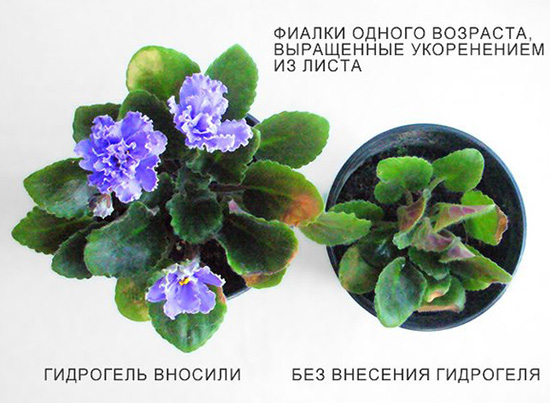
If you need to add polymer to a pot with a growing indoor plant, then you must first calculate its volume. For 1 liter, you need to add 1 g of dry granules, this is about 1/4 teaspoon. Puncture the soil down to the bottom of the pot and add the hydrogel to it.
Then the plant needs to be watered, if some granules appear on the surface - they need to be sprinkled with soil 1-2 cm thick, after a short time the roots will reach these granules as well. And the lack of moisture for 15-20 days will not harm them, so if you go on vacation, you will not have to worry about your pets.
Description of the technology of growing plants on water
The combination of soilless technologies is called hydroponics: from the Greek "υδρα" - water, "πόνος" - work. That is, the main load is assigned to water: it dissolves the required proportions of nutrients, supplies them to the roots.
The centuries-old experience in the development of hydroponics, and later advances in the science of agrochemistry showed that the most important elements for the full development of crops are nitrogen, sulfur, magnesium, calcium, iron, about a dozen salts, and the necessary factors for healthy growth are the pH level, aeration of the solution, conditions, close to natural and other nuances.
Today, you can choose not only the volume of performance of the finished installation - home or industrial. At the service of amateurs and entrepreneurs are farms based on all existing water growing technologies. A person can choose attitudes based on needs, selected cultures, and financial capabilities.
Soil for indoor plants: main components
SODDLAND
One of the main components of the potting mix. This type of land is obtained after the cut sod (topsoil) in meadows and fields is laid in layers on top of each other with the addition of organic fertilizers (manure) between them.
Such a “cake” lasts for two years, then it is sieved, packaged in packages and sent for sale.
Sod land for the preparation of your own soil mixtures is often replaced with garden soil, but clean and fertile, or soil is collected from wormholes.
Deciduous land
In autumn, leaves are collected (better - maple, linden, apple, ash; you can not - oak, willow, chestnut, poplar). Then slaked lime is added and compost is made.
In a young forest, the top layer of soil is removed, and in an old one, you can dig deeper. Deciduous soil is quite light and loose, together with sand it is used for growing seeds and planting cuttings.
HUMUS
Humus pH 5-6. Fresh manure (cow, horse) is piled up, covered with black polyethylene, and sifted two years later.
Signs of high-quality humus: uniformity, friability and the absence of a strong odor. For indoor plants and flowers, you need to use biohumus instead of humus.
SAND
It is recommended to use only coarse clean river sand. The sand transports air to the root system and has good water permeability. Therefore, it is an essential component for most potting mixes.
PEAT
For indoor plants, peat is used in factory packaging (high moor peat is acidic, and lowland peat is slightly acidic). Peat is one of the main components for the vast majority of soil mixtures.
Fresh potting peat should only be used after it has become smooth, free-flowing and soft.
Peat improves the quality of the substrate, increases its friability and makes it lighter. Due to its properties, peat is used for germinating seeds and planting cuttings.
CONIFEROUS LAND (pH 4-5).
Under the coniferous trees, the top layer of the soil is removed, mixed together with a small amount of sand and peat. This potting soil works well for azaleas, begonias, gloxinias, violets.

Components for potting soil
Pests in the soil of indoor plants
Mold infecting the soil of indoor plants is not the only problem of concern to flower growers. Often, when growing flowers, you can also encounter insect pests. Some of them affect the soil, harming the plant's root system.
Poor-quality soil and improper care of the plant can become the cause of the appearance of pests. In the fight against insects, special industrial preparations will help, as well as folk remedies, for example, soap solution or manganese solution.
- Woodlice. They appear due to excess moisture in the soil. They are dangerous in that they harm the roots of the plant by eating them. When they appear, watering should be reduced. Insects can be removed manually.
- White bugs (podura) in the soil of indoor plants. They appear due to high humidity of the earth or air. The way to deal with them is that the topsoil must dry out, after which they will disappear. You can also fight with chemicals: a solution of potassium permanganate, arrows Doctor, Aktara.
- Nematodes. Microscopic worms settling on plant roots. Excess moisture in the soil also contributes to their appearance. In the fight against these dangerous pests, anthelmintic drugs such as Decaris can be used. It is better to destroy a heavily affected plant in order to avoid contamination of other plants.
- Bulbous root mite. Harmful to Hippeastrum and other bulbous plants. Appears due to high humidity. Preventive measures: good drainage, moderate watering. The roots and bulbs affected by the mite are treated with an available systemic insecticide, for example, Aktellik, Aktara.
Growing onions in a bag without soil
This is an economical, easy way of forcing fresh spring onions.
You must have:
- Small, tight plastic bag;
- Substrate, such as plain, non-colored toilet paper;
- Bulbs;
- Water.
Growing onions without soil is a fairly simple procedure. At the bottom of the bag, a layer of substrate is laid out, about 2 centimeters thick. It is poured with water, but so that it does not show through when pressed, but still the paper is sufficiently damp. The bulbs are tightly stacked next to each other, roots down, until the volume of the package is completely filled. The bag should be clasped on all sides from above, inflated with air, then the top should be tied, so that this makeshift mini-greenhouse resembles an inflated balloon. A person exhales carbon dioxide, which is needed by plants. It is with them that the bag is filled when inflating. After all the manipulations, the package must be left on the windowsill. Do not open, water extra until fresh onion arrows reach the top of the bag. After that, it can be opened, then watered as needed, but in moderation. Otherwise, the onion can rot.
If you consistently prepare packages with sprouting onions, you can always have them on the table, regardless of the season.
Specialized primer for indoor plants and flowers
PRIMER FOR AZALIUM. The mixture is light, acidic, moisture and breathable. In store versions, the base of the substrate should be high-moor peat. It is advisable to supplement the soil for azaleas with coniferous soil (1: 1).
PRIMER FOR BROMELIUM. The mixture consists of high-moor peat, leafy earth and sand. It is advisable to add tree bark or coal, sphagnum and coniferous soil to the purchased soil.
PRIMER FOR CLOTHES. The mixture consists of high moor peat and sand. It is advisable to add leaf and coniferous soil to the purchased soil (1: 1: 1).
PRIMER FOR CACTUSES AND SUCCULENTS. The mixture consists of sand with the addition of leafy earth and high-moor peat. Coarse sand can be added to the shops option.
The video has been deleted.
| Video (click to play). |
For more information about the soil for cacti, see the article: "HOW TO CARE FOR CACTUS IN HOME CONDITIONS."
PRIMER FOR ORCHIDS. Different types of orchids require a different nutrient substrate.For epiphytes, the soil mixture is prepared from the bark, sometimes sphagnum moss and charcoal are added (peat is not allowed!).
You can buy bark of a certain fraction, boil and plant an orchid without adding other components.
For other types of orchids, the substrate is prepared from peat, sphagnum, bark and coal.
PRIMER FOR PALMS. The mixture consists of high-moor peat, turf and leafy soil with sand. Palm trees prefer a loose and breathable substrate. With age, the proportion of sod land in the mixture in plants gradually increases.
PRIMER FOR FANS. You can prepare this version of the mixture: soil for succulents + leaf humus (or vermicompost) in a 1: 1 ratio.
Some of the options for a specialized potting soil mixture for indoor plants.
We hope that now the soil for indoor plants and flowers in your home will be optimal. If you have any questions, we will be happy to answer them!
ADDITIONS TO THE ARTICLE:
1. HOW TO PREPARE SOIL FOR SEEDLING CORRECTLY?
2. SOIL ACIDITY: HOW TO DETERMINE AND CHANGE?
3. FERTILIZERS FOR INDOOR PLANTS: TYPES AND TIPS FOR APPLICATION!
We wish you many beautiful flowers in your home and happiness in your life!
In modern flower shops, earthen substrates are presented in a large assortment. It is not difficult to pick up ready-made soil for plants of any type. During the promotions, soil for indoor plants can be purchased at an attractive price. But in order for the plant to grow and develop well, it is better to prepare the earth for it yourself.
When choosing a soil mixture, its reaction (Ph) should be taken into account. Most indoor and garden plants prefer neutral or slightly alkaline soils. Some representatives of the plant world need an alkaline or acidic soil. For chrysanthemum, pelargonium, begonia, fern, cyclamen, a slightly acidic earthy mixture is suitable. Acidic soil must be purchased for hydrangeas, camellias, azaleas. Lily, cloves, cineraria, asparagus will thrive on alkaline soil.
Acidic soils include peat, clay-sod and loam. If you take sod land on black soil, it will be slightly alkaline or neutral.
Seed watercress
Some watercress varieties are ready to be cut and consumed within two weeks after sowing. This fast-growing cold-resistant greenery is rich in vitamins and mineral salts, and is also very unpretentious and even in winter it can be grown on a windowsill without additional lighting.
Show your child that these seeds can be grown not only in the ground, but even on a damp sponge or cotton pad moistened with a weak solution of complex fertilizers. Conduct an experiment - plant a watercress this way and that, every day spray with water from a spray bottle and try to guess together - which one will come up earlier and give more greenery.
Explain to the kid why it will not be possible to grow large plants in this way, tell about the benefits of fertilizers and the importance of nutrients.
Growing lettuce on a windowsill in winter? Easily!
We will teach you how to get vitamin greens right in your apartment all year round.
Plants in the house
After purchasing a houseplant, it is brought into the house. But what to do next? What kind of care does the culture need, and where to put the pot in general:
-
The place for the flower pot is chosen, as a rule, light. Only a few flowers can grow in dark corners of the house, such as azalea, arrowroot and fittonia. If you need to put the plant on the windowsill, you should choose the northwest window.
- Adaptation is successful if the plant is hardly touched at all for 1-2 weeks. It is advisable to provide him with a good temperature regime, watering, fertilizers. The temperature should not be higher than +35 and not lower than +5 degrees. Although these are only approximate figures, since different plants have their own temperature preferences.
- Pots. When purchased, the plant will already sit in a pot, but usually this is a temporary "shelter" made of low-quality plastic.Over time, as the flower adapts, it will need to be transplanted into a permanent pot. It is selected by the type of flower, its root mass, age. The more roots, the more capacity is needed. For plants with shallow root systems, low pots can be selected. There are special containers for orchids (transparent, with holes) and for many other plants.
Important!
Some indoor plants are poisonous. They should be installed out of the reach of children, animals.
And during the transplantation of such crops, gloves must be worn. Such dangerous flowers include nightshade, fixer, anthurium, oleander, dieffenbachia.
Vegetable growing without soil

This plant growing system is gaining more and more fans and professionals around the world.
In the Scandinavian countries, more than 80% of the total area of greenhouses is occupied by vegetable crops grown using this technology, and in the Netherlands - more than 50%.
Thanks to this method, you can grow a high yield of plants with minimal cost, without the use of technology, environmentally friendly and in a small area. His name is hydroponics.
The hydroponic method is a technology for growing plants without soil, on artificial media (substrates), in water, in the air, using nutrient solutions. Substrate (expanded clay, crushed stone, sand, gravel, moss, sawdust, peat, etc.
) serves only as a support for the roots of plants, and they receive nutrition from an aqueous solution, which contains all the necessary substances. In this way, a variety of vegetables, fresh herbs, berries, flowers are grown (see Fig. 1, 2).
In hydroponics, nutrient uptake is faster and the extra oxygen stimulates faster root development.
After all, the plant does not need to spend energy looking for nutrients - they are supplied in an easily accessible form to the roots of the plant. Therefore, the plant uses the saved energy for development and growth. Also, when growing in hydroponics, less water is used.
This is especially important in the industrial cultivation of agricultural products, especially for countries with a lack of fresh water.
Using indoor hydroponics technology, it is possible to regulate the concentration of carbon dioxide in the air, which is favorable for photosynthesis, to regulate the humidity and temperature of the air, as well as the duration and intensity of light. The creation of ideal conditions for plant growth ensures high yields, better quality and in a shorter time.
Hydroponically grown vegetables are in high demand in developed countries because hydroponics significantly reduces the need for pesticides, as the plants are healthier, and they grow without soil, which is the main habitat of pests and accumulators of harmful substances.
Difficulties
However, the initial cost of hydroponics is significantly higher than the purchase of conventional greenhouse soil. But, according to practitioners, the plus is that the initial investment of time and money will pay off with interest, since the plant will begin to grow several times faster and it will be much easier to care for it.
An excursion into history
The history of technology begins in antiquity. For example, the Hanging Gardens of Babylon, one of the Seven Wonders of the World, was probably one of the first successful attempts at growing plants on artificial soil.
The floating gardens of the Aztecs in Central America are another successful example of hydroponic technology.
A lot of work on growing plants without soil was carried out by the famous scientist D.N. Pryanishnikov and his students. Since 1936, vegetable and flower plants have been grown in the USSR using the hydroponics method. The first greenhouse plants using this growing technology were built in Moscow and Kiev.
Currently, hydroponics is conquering the world more and more, who knows, perhaps, this technology is the future. Industrial plants for the production of green fodder and vegetables, as well as blueprints for home hydroponic devices, are already being advertised on the Internet with might and main.
The UAE went further
To improve the efficiency of water use in Dubai, Agricel recently created a new agricultural system that uses film instead of substrate and allows farmers to use 90 percent less water.
The hydromembrane consists of water-soluble polymers and a hydrogel and absorbs water and necessary substances from the nutrient medium. In this case, the plant puts out several small and dense roots, which are attached to the surface of the hydromembrane (see Fig. 3). According to the creators of the system, as a result, it is possible to grow products that are much sweeter and richer in vitamins.
At the same time, pathogens are unable to penetrate the hydromembarne, which makes plants more resistant to bacteria and viruses. It also eliminates the need for pesticides. Users will also use 80 percent less fertilizer when growing crops, according to the company.
09.08.2013
What should be the composition?
The necessary list of soil mixture components that suits these capricious plants is found in substrates for orchids. Both of these representatives of exotic flora are very similar in their requirements for care and maintenance.
For their full growth and development, it is important that the soil is drained, provides oxygen access to the roots, contains a sufficient number of air pockets, passes moisture well, but does not dry out.
Usually, most of the soil mixtures recommended for planting and growing anthuriums contain several basic components.
- Peat provides low acidity. It gives the substrate airiness and lightness, and also enriches its supply of nutrients, micro- and macroelements.
- Turf is an ingredient of organic origin, thanks to which the soil mixture acquires porosity, moisture and air permeability.
- Sand is a component that makes the substrate lightweight. Due to the presence of sand in the soil mixture, excess moisture does not stagnate in the pot, and the soil does not cake.
- Leafy soil is a valuable component that provides a loose and nutritious substrate. Its main element is semi-decayed tree foliage, due to which the soil has a suitable slightly acidic reaction.
- Sphagnum moss is a common component of substrates for exotic plants. It gives airiness to the soil mixture, passes water well and at the same time maintains optimal moisture at the roots. Its presence in the substrate provides easier and more comfortable survival for young plants.
- Overripe needles are a valuable component of slightly acidic soil mixtures. It gives the substrate a looser and lighter structure, has a good effect on acidity, and also prevents the damage to plants by fungal infections and chlorosis.
- Compost is decomposed organic residues used to increase the fertility of the substrate. In its pure form, the component is aggressive, therefore it is used only as part of mixtures.
- Charcoal is a useful organic component that increases the protective properties of the substrate. It is used as part of a soil mixture for better drainage, moisture and air permeability, as well as for the prevention of fungal infections.
8photos
In order for the roots of the plant to receive a sufficient amount of air, it is advisable to transplant anthuriums in soil mixtures containing drainage. The following are usually used as drainage elements:
- brick chips;
- crushed expanded clay;
- small river pebbles or rubble.
When planning to transplant your exotic pet into a self-prepared soil mixture, you should pay attention to such a valuable component as the bark of coniferous trees. Pine bark fragments - the basic element of substrates intended for orchids
Many flower growers use it in the preparation of soil mixtures for anthuriums.
The crushed bark makes the substrate light, permeable to moisture, and loose. It maintains a constant weak acidity, prevents the development of diseases of the root system.
Description of growing indoor flowers without soil
For over 100 years, there has been a method of growing indoor plants that avoids soil-related problems. We are talking about hydroponics, that is, growing plants without soil using substrates that replace soil (expanded clay, vermiculite, moss, peat, coarse sand, coconut fiber and others) or without them (this method is also called aeroponics).
 Hydroponics: a technology for growing indoor flowers without soil
Hydroponics: a technology for growing indoor flowers without soil
With this method of cultivation, the necessary plant nutrients are obtained from aqueous solutions. The most common recipe for such a solution is the solution of the German scientist, one of the founders of hydroponics F. Knopp. For hydroponic growing at home, you can purchase ready-made hydroponic nutrient solutions.
Growing plants hydroponically is possible if several conditions are met:
- free access of air to the root system of the plant;
- sufficient air humidity where the roots of the plant are located;
- contact of plant roots with nutrient solution.
According to the method of feeding the nutrient solution to the roots of the plant, the following methods of hydroponic growing of plants can be distinguished:
- one-time filling of a container with a plant with a nutrient solution, with 2/3 of the root system immersed in the solution;
- traditional periodic watering of the plant with a solution from above;
- adding the solution to the pan of the planter.
For hydroponic growing of plants at home, it is recommended to purchase special containers or use pots of different sizes.
What indoor plants can be grown without soil
For those who are learning the basics of hydroponic cultivation, it is recommended to start with such plants as anthurium, aspidistra, vriezia, begonia, cactus, dieffenbachia, ficus, monstera, nephrolepis, shefflera, tradescantia.
In general, this method can be used to grow absolutely any plant.
In general, growing hydroponic plants is a fairly straightforward process that can help you avoid soil problems.
Growing lettuce without soil
One of the most sought-after plants is lettuce. It is a source of essential vitamins and minerals. The hydroponic method allows it to be consumed all year round, not just seasonally. Having spent not so much money, labor, time, you can grow salad at home without soil or develop this profitable business. Both leafy and head lettuces are suitable. After receiving the seedlings, they are placed in a hydroponic plant. Lettuce can be grown using either the flowing nutrient bed method or the floating platform method.
To grow lettuce using the hydroponic method without soil and soil at home, you need:
- Plastic pots with holes;
- Styrofoam sheet 2-3 cm thick;
- Air compressor;
- Light-blocking container;
- Substrate;
- Nutrient solution.
A sheet of polystyrene is perforated so that the pots enter, but do not fall through. The compressor will provide the roots with sufficient oxygen. The nutrient solution is diluted strictly according to the instructions. This should not be neglected. Both a lack and an excess of vitamins and minerals can ruin your salad. Expanded clay, mineral wool or coconut flakes are used as a substrate. Sprouted seeds are carefully placed in pots. In autumn and winter, it is advisable to provide additional illumination.A table lamp will do. The nutrient solution should be added, completely changed once every 30 days. If you follow all the rules, juicy, crispy lettuce leaves will delight you all year round, balanced in composition.

